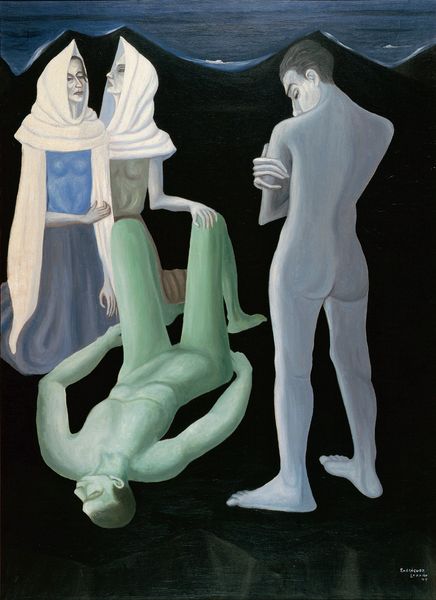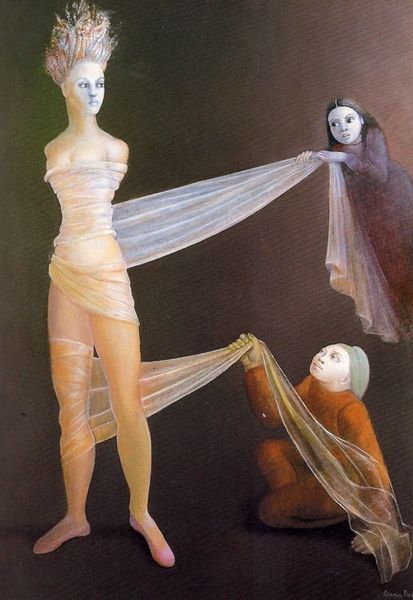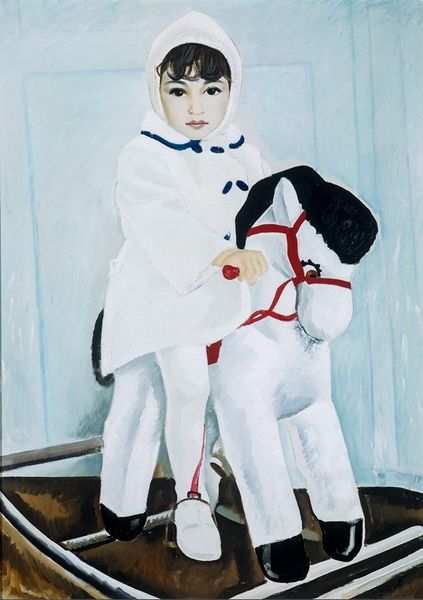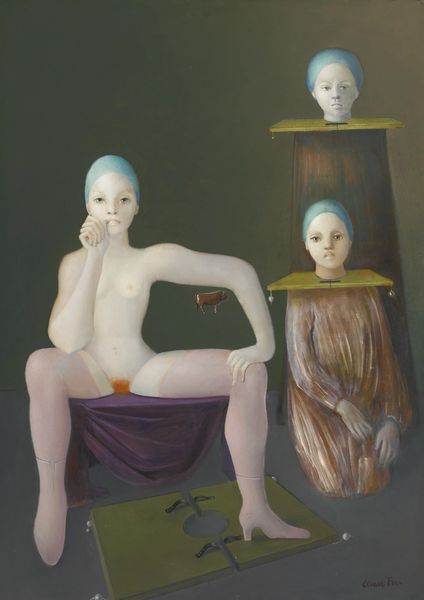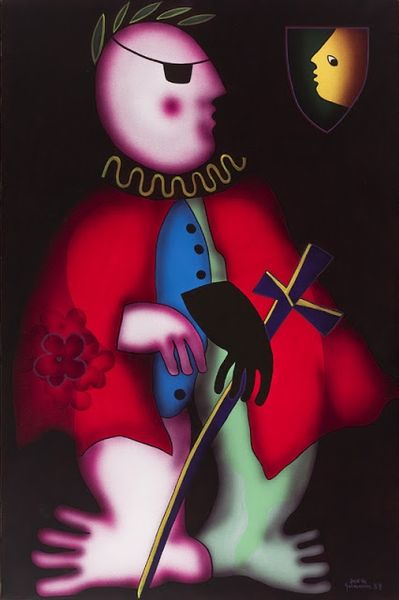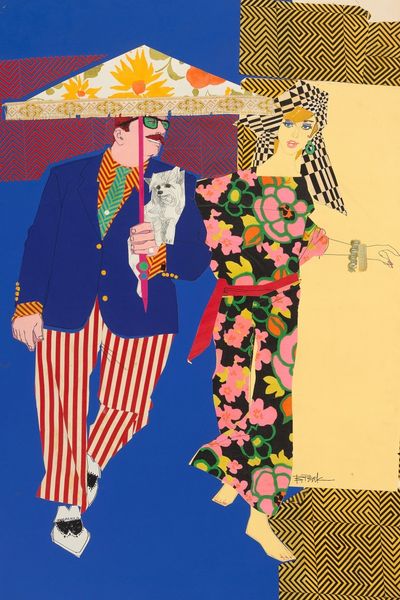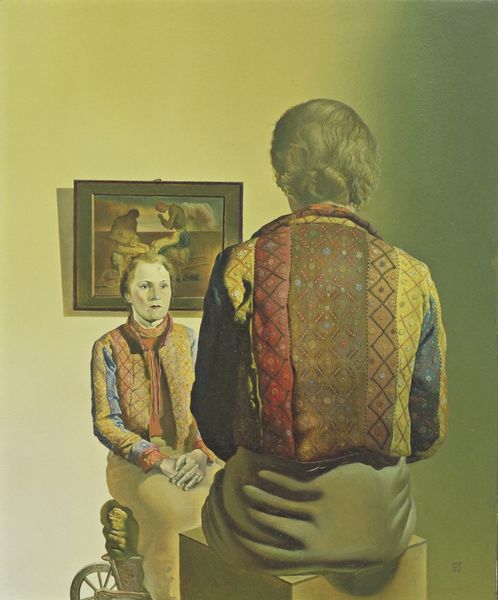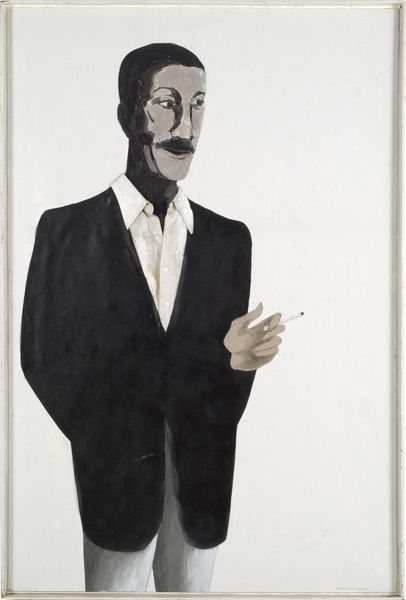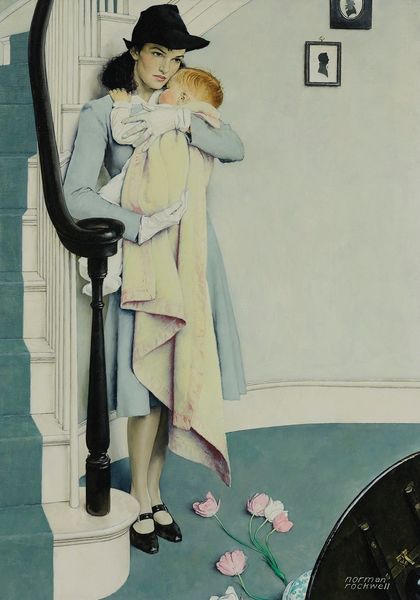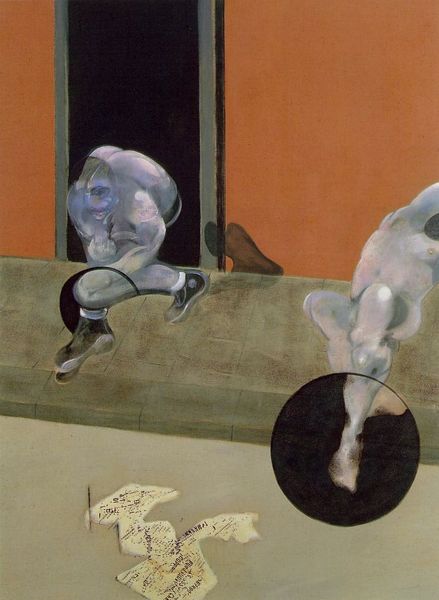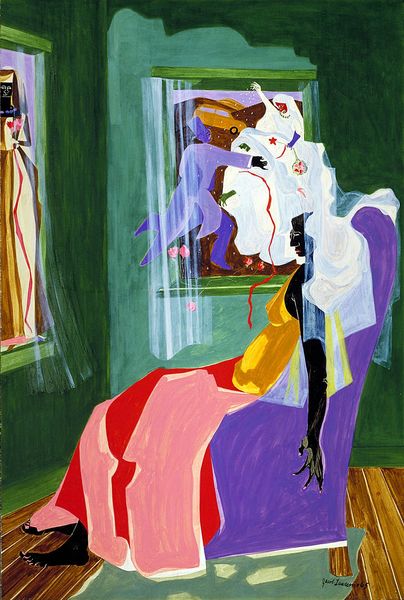
painting, oil-paint
#
portrait
#
art-deco
#
painting
#
oil-paint
#
caricature
#
figuration
#
framed image
#
group-portraits
#
facial portrait
#
italian-renaissance
#
portrait art
#
realism
Copyright: Antonio Donghi,Fair Use
Curator: Antonio Donghi's "Circus," painted in 1927, captures two performers with arresting clarity. Editor: It strikes me as remarkably static, almost staged. The lighting is even, and both figures exude a detached presence, especially given the theatrics we associate with circus folk. Curator: Donghi often portrayed figures with a sense of restrained elegance. His work, while appearing realistic, served as a commentary on social hierarchies. The circus, often romanticized, is here presented as a calculated performance of skill and class. Editor: I'm fascinated by the costume of the clown, split cleanly down the middle – one half white, the other a deep purple. And the contrasting material – one side appearing like cotton or canvas, the other resembling satin or velvet. How were these effects achieved with oil paint? Curator: Donghi was meticulous in his application, layering paint to achieve a porcelain-like finish on the faces. It suggests an effort to sanitize the figures. It also connects to Italian Renaissance aesthetics where formalism and the search for ideal beauty played a significant role. Editor: There’s something uneasy about that calculated beauty though, perhaps intentionally. I read this too as critique of the laboring body, and of this careful class performance of art as separate from ‘craft’. We are seeing figures actively at work, using both physicality and technique to perform. Curator: Indeed. The performers’ meticulous presentation points towards this exact thing. Each object seems deliberate. What strikes you in particular about the props? Editor: The clown’s hat is interesting— the angle held implies some performative labor is involved in holding. There is careful calculation in that staging, too. All in all it makes one reflect upon both these subjects’ means, but moreover our own consumptive viewing. Curator: And maybe Donghi intended this as a broader social observation—of the interrelation between performer and audience. Editor: Perhaps Donghi hoped to provoke some thought on how artistic labor, display, and value creation intersect.
Comments
No comments
Be the first to comment and join the conversation on the ultimate creative platform.

